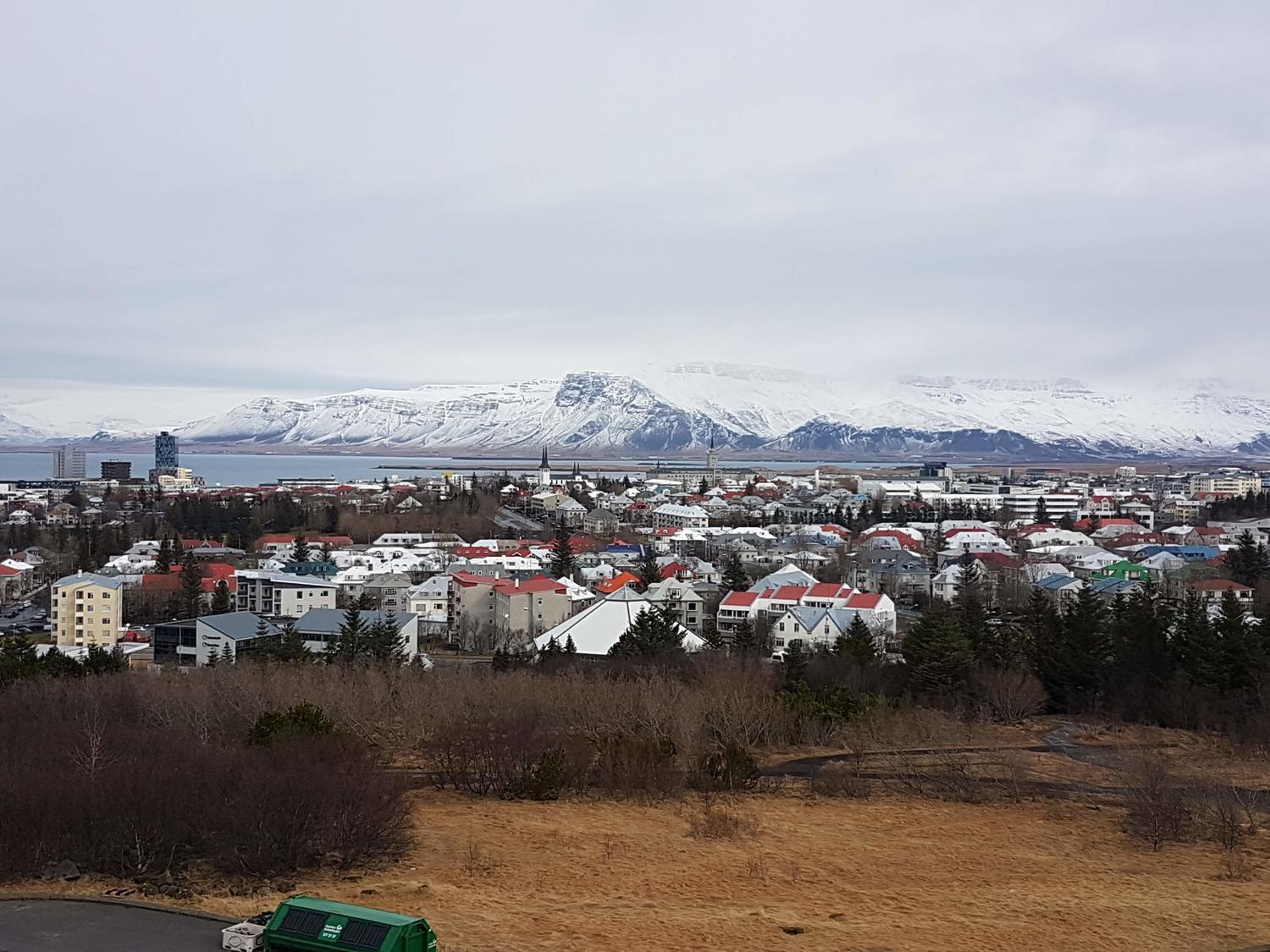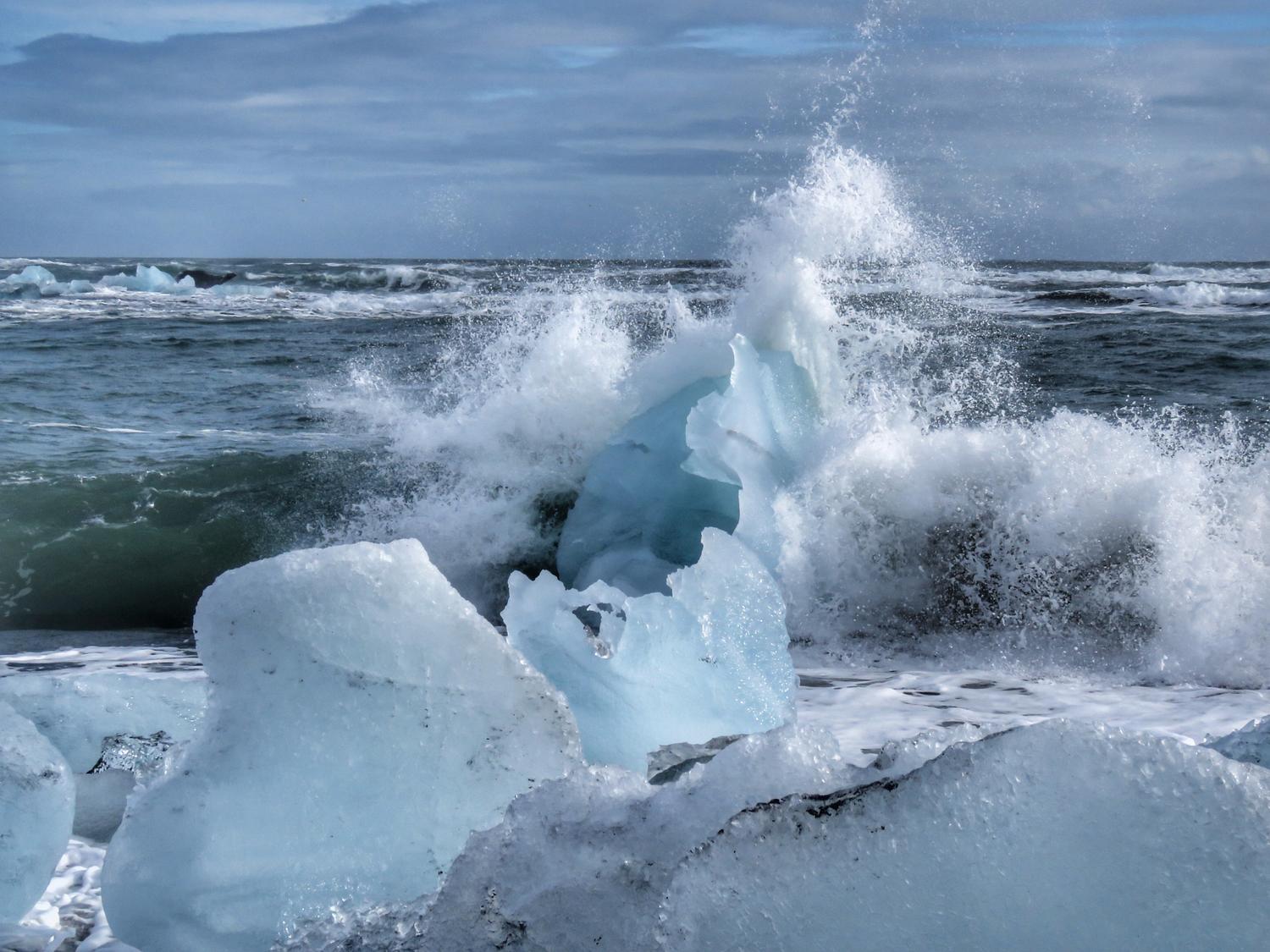We drove out of Vík, heading for one of Iceland’s most mysteriously beautiful features: the Diamond Beach. Littered with black volcanic rock and gleaming white icebergs, the shore’s contrast makes it magnificent. The icebergs, supplied by the nearby glacier Vatnjökull, break off and linger in a glacial lagoon before floating down what is supposedly the world’s shortest river. Then, they belong to the icy tides of the Atlantic.
The strong rhythm of the waves as they carried the drifting icebergs out to sea was hypnotizing. Despite the biting wind and the frigid air, we stayed long enough to witness bits of ice of all different sizes move out. One idea in particular left us in awe: If you were to sail South off the beach into the Atlantic, you wouldn’t hit land again until Antarctica. At this moment, we realized just how isolated the icy little island is.
The next day, as the bus ground to a stop, we peered up through the fog to see a wall of water thundering down from above, the picturesque Skógafoss. Fulmar birds nestled together in warm mossy beds along the icy cliff. At the base of this force of nature with the sting of icy water on our cheeks from water ricocheting violently off the smoothed rocks formed from years of weathering.
Later, we were on Sólheimajökull, one of Iceland’s most famous glaciers. Our crampons cut through a slurry of black sand and ice, the sleepy giant creaking beneath us. We were living the tourist brochure, and it felt fantastic.
Sólheimajökull is more than stunning scenery, however. It is also a poster child for climate change. Most tellingly, the gear shed was a half mile walk from the face of the glacier. Ten years ago, it was a few steps away. A sign indicated that last year the glacier retreated more than 110 meters. I couldn’t help but wonder if I was spending borrowed time. We were standing on solid ice that, next year, would never be frozen again.
We returned to Reyjkavík for our last day in Iceland. A city of little more than 120,000 people, it’s a micro-metropolis. Replete with high-end retail stores, electric buses, and large bakeries, it is where all of the country’s energy is concentrated. People walked over ground that had once been lava and used warm water heated by magma, seemingly unaware of the natural riches that gave them their luxurious lifestyle. Despite Reykjavík’s urban feel, however, the mountains looming on the horizon reminded us that rugged wilderness is never far in Iceland. The mountains and volcanoes greeted us when we landed, and they were the last thing we saw when we left.
The glacial water had barely dried from our boots when we set foot in the US again. Our spent jet fuel lingered in the atmosphere over the Atlantic. The bright lights of Denver cut through clouds, a glaring reminder of our ECS’s main theme. Our school bus chugged along I-25 back to campus, belching fumes as we hit stop-and-go traffic. Our phones lit up as we plugged them back into the grid for the first time in a week. We were back to old habits of energy consumption. But now we are wiser.
Follow all of the student ECS Blogs on Campus News.










